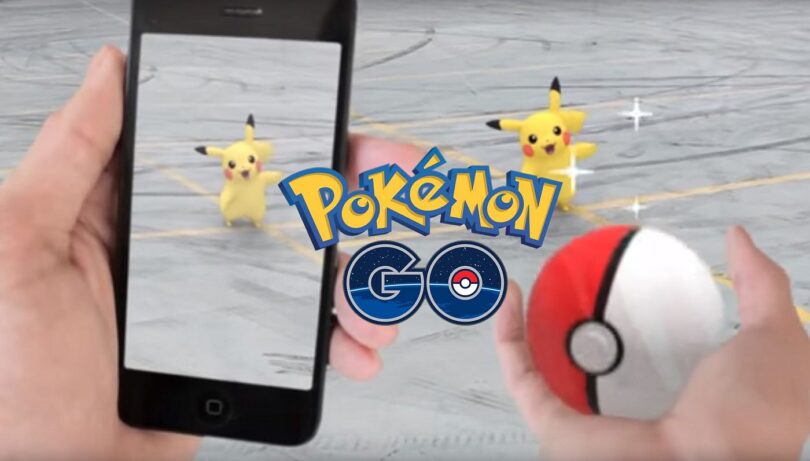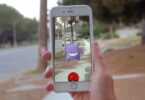The Science Behind Pokémon Go’s AR Technology
When Pokémon Go’s AR Technology launched in July 2016, it didn’t just bring Pokémon into our lives—it brought them into our world. Suddenly, Pikachu could appear in your living room, Bulbasaur might pop up in the park, and Snorlax could block your driveway. Millions of people were hooked, not just because of nostalgia, but because the game felt magical.
That “magic,” however, wasn’t magic at all—it was augmented reality (AR) technology. Behind every Pidgey on the sidewalk is a fascinating combination of computer science, GPS, sensors, and clever engineering. This article dives deep into the science behind Pokémon Go’s AR technology, breaking down how it works, why it was revolutionary, and where it’s going in the future.
1. What is Augmented Reality (AR)?
Before jumping into Pokémon Go specifically, it helps to understand augmented reality itself.
-
Virtual Reality (VR): Creates a completely digital world. When you wear a VR headset, you’re cut off from reality.
-
Augmented Reality (AR): Enhances reality by overlaying digital images, sounds, or objects onto the real world.
Pokémon Go doesn’t replace your environment; it adds to it. Your phone’s camera captures the world around you, while the app inserts a Pokémon on top of it. You’re still standing in your backyard, but your screen convinces you there’s a Squirtle waiting to be caught.
2. Why Pokémon Go Was a Breakthrough in AR
AR wasn’t brand-new in 2016. Some experimental apps and games already used it. But Pokémon Go did three things differently:
-
Mass Adoption: It brought AR to millions of everyday smartphone users.
-
Simple but Fun Mechanics: Instead of complicated hardware, you just needed a phone.
-
Blending Real & Virtual Worlds: Pokémon were linked to real-world locations through GPS, making it feel like they “lived” in your city.
This combination made Pokémon Go the Pokémon Go’s AR Technology.
3. Core Technologies Behind Pokémon Go
The game’s magic depends on several technologies working together:
a. GPS (Global Positioning System)
-
Determines your real-world location.
-
Pokémon Go uses GPS signals from satellites to pinpoint where you are on Earth.
-
The accuracy is usually around 5–10 meters, enough to know if you’re near a park, street, or landmark.
b. Smartphone Camera
-
Provides the live video feed of your surroundings.
-
Acts as the “window” through which Pokémon are projected.
c. Gyroscope and Accelerometer
-
Help the phone understand which way you’re facing and how it’s tilted.
-
Without these, a Pokémon would appear to “float away” when you moved your phone.
d. AR Software
-
The brain that merges the digital and real worlds.
-
Pokémon Go initially used Niantic’s Real World Platform, which combined location data with simple AR overlay techniques. Later updates integrated ARKit (Apple) and ARCore (Google) for more realistic placement.
4. The Role of GPS in Pokémon Go
GPS is the backbone of the entire experience. Without it, the game wouldn’t know where to spawn Pokémon or where to place PokéStops.
-
Spawning Pokémon: Different Pokémon appear in different environments (water Pokémon near lakes, grass types in parks). GPS ensures the app knows your surroundings.
-
Movement Tracking: Walking is key to hatching eggs and finding Pokémon. GPS tracks your steps.
-
PokéStops & Gyms: Real-world landmarks like statues, murals, and stores are mapped as in-game locations.
Interestingly, Pokémon Go doesn’t use raw GPS alone. It combines it with cell tower signals and Wi-Fi positioning for better accuracy, especially in cities where skyscrapers can block satellite signals.
5. How AR Displays Pokémon in the Real World
Here’s where the real “science fiction” begins. How does your phone decide that Charmander should appear standing on the sidewalk, and not floating upside down in the air?
Step 1: Camera Feed
Your phone camera streams live video of your surroundings.
Step 2: Surface Detection
The AR software scans the environment to detect flat surfaces like the ground, tables, or benches. This is possible thanks to ARKit and ARCore, which use computer vision algorithms to recognize planes.
Step 3: Placement of Pokémon
Once a surface is found, the software anchors the Pokémon to it, making it look like the creature is standing in the real world.
Step 4: Adjusting to Movement
If you tilt your phone, the Pokémon stays anchored, just like a real object would. This is thanks to the gyroscope and accelerometer.
6. The Evolution of Pokémon Go’s AR
When the game first launched, the AR mode was quite basic: Pokémon were simply pasted on top of the camera view. They didn’t really interact with the environment.
But over time, Niantic improved the AR experience:
-
AR+ Mode (2017): Pokémon could now recognize real-world surfaces and appear at proper sizes.
-
Occlusion Technology: Later updates made it possible for Pokémon to go behind objects, like hiding behind a tree. This was a huge leap in realism.
-
Multi-User AR: With shared AR sessions, two players could see the same Pokémon in the same place through their phones.
These updates turned Pokémon Go from a simple overlay app into a more advanced AR playground.
Read More: Best Smartphones for Playing Pokémon Go in 2025
7. Challenges in AR Technology
Pokémon Go’s AR might feel magical, but it comes with scientific challenges:
-
Battery Drain: Constant GPS tracking, camera usage, and AR rendering consume huge amounts of power.
-
Accuracy: GPS can be off in crowded urban areas, causing your avatar to “drift.”
-
Lighting Issues: AR works poorly in low light since the camera struggles to detect surfaces.
-
Processing Power: Older phones often lag or overheat while running AR features.
Despite these hurdles, Niantic kept improving efficiency to make the game playable for millions.
8. Niantic’s Real World Platform
At the heart of Pokémon Go is Niantic’s Real World Platform, a mapping and AR system built on years of research.
-
Ingress (2012): Niantic’s first AR game, which built the foundation for Pokémon Go’s maps.
-
Crowdsourced Maps: Players unknowingly helped map landmarks, which became PokéStops.
-
AR Cloud: Niantic is developing a shared digital layer of the world where AR objects can persist across sessions and devices.
This platform doesn’t just power Pokémon Go’s—it’s shaping the future of AR gaming.
9. Pokémon Go and Machine Learning
Machine learning plays a quiet but important role in AR:
-
Image Recognition: ARKit and ARCore use AI to detect surfaces and edges in the camera feed.
-
Pokémon Behavior: AI helps determine how Pokémon move, jump, or respond when you throw a Pokéball.
-
Cheating Prevention: Machine learning detects unusual GPS patterns to stop spoofers.
10. The Social Science Side of Pokémon Go
Beyond the technical science, Pokémon Go revealed something about human behavior.
-
Exercise: The game got people walking, sometimes miles a day.
-
Community: PokéStops and raids encouraged strangers to meet and collaborate.
-
Urban Exploration: Players discovered hidden murals, monuments, and parks in their cities.
In a way, Pokémon Go’s “science” isn’t just AR—it’s psychology and sociology too.
11. The Future of AR in Pokémon Go
Pokémon Go was just the beginning. Here’s what the future may hold:
-
Smart Glasses Integration: Instead of looking through your phone, imagine wearing AR glasses where Pokémon appear in your natural vision.
-
More Realistic Interactions: Pokémon might respond to your gestures, weather, or even time of day.
-
Persistent Worlds: A Pikachu you place on your desk could stay there until you return, visible to anyone else with AR devices.
-
Haptic Feedback: With wearable tech, you might “feel” the vibration when a Pokémon runs past you.
12. Conclusion
The science behind Pokémon Go’s AR technology is a blend of GPS navigation, computer vision, machine learning, and smartphone sensors. But more importantly, it’s a reminder of how science can create magic.
Pokémon Go took decades of technological progress—satellites, cameras, algorithms—and turned it into a simple joy: seeing Pikachu in your backyard.
As AR technology evolves, we’re just scratching the surface. In the near future, Pokémon might not just live on our phone screens—they might share our world in ways that feel almost indistinguishable from reality.







